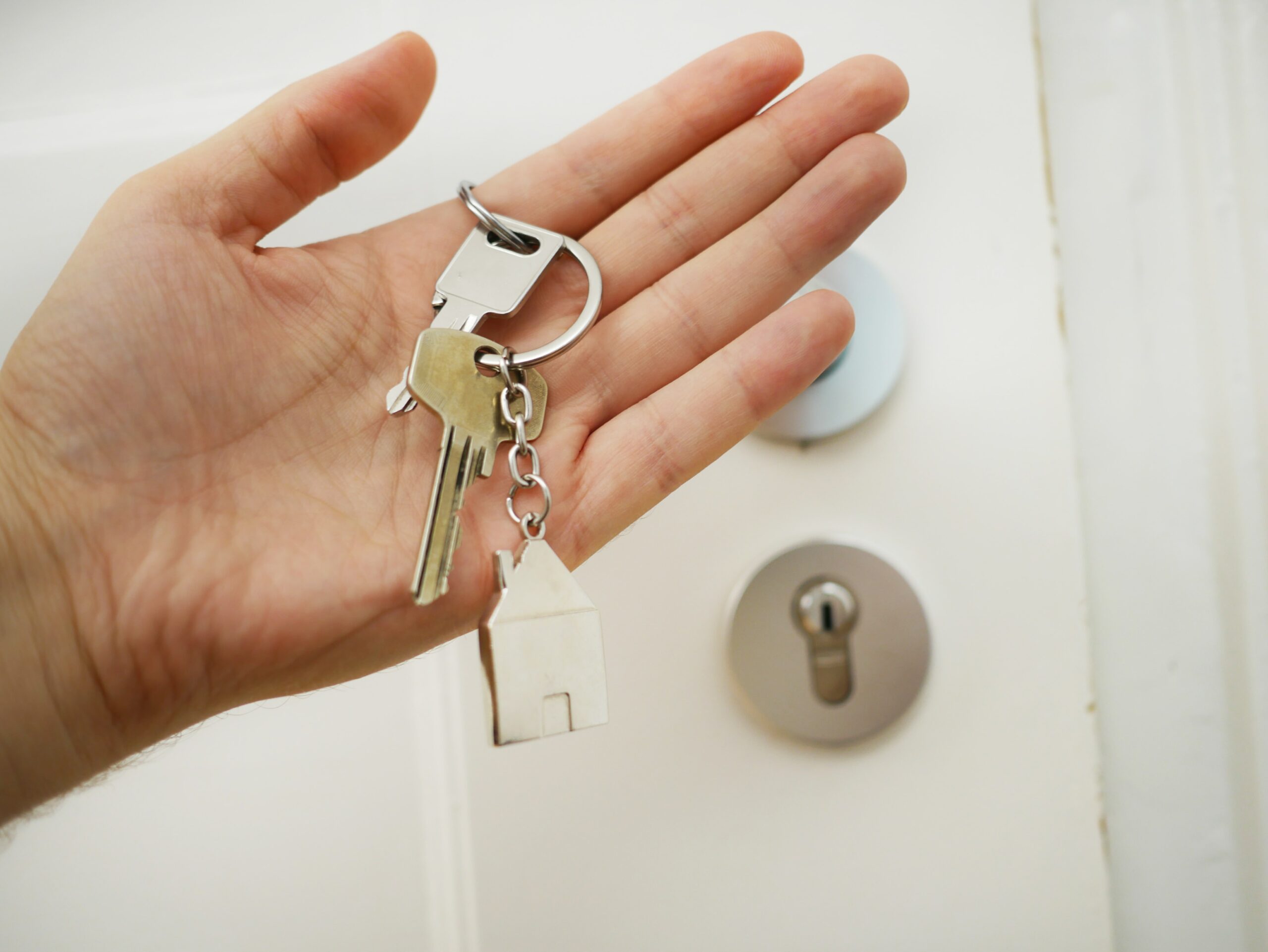Navigating through the process of discharging a home loan in Australia is an essential part of the journey for homeowners and potential homebuyers. Understanding this process is critical, whether you are considering selling your property, refinancing your loan, or concluding your mortgage.
This comprehensive guide aims to demystify the process, highlighting key steps and the minimal costs involved, to ensure you are fully prepared for this important financial transition. If you’re looking for the best mortgage brokers in Sydney and Melbourne to help, check out our top-10 listings.

What is Mortgage Discharge?
A home loan discharge is a legal process to formally remove the mortgage lien from your property’s title. This process comes into play when you complete the mortgage payments, decide to refinance your mortgage, or opt to sell the property. It’s a crucial step that signifies the end of your agreement with the lender and the beginning of a new phase in your property ownership.
The Reasons to the Discharge of Mortgage
Complete Mortgage Repayment: When you have paid off your mortgage in full.
Refinancing the Mortgage: Opting for a new loan with different terms or rates from another lender.
Selling the Property: Transferring your property’s ownership to another individual or entity.

Step-by-Step Process of Mortgage Discharge in Australia
1. Notification to Your Lender:
Begin by informing your lender about your decision to discharge the mortgage. This initial step is usually done via an online notification or through direct communication.
2. Filling Out the Discharge Authority Form:
Complete and submit a discharge authority release form to your lender, making sure it is a completed form. This document is crucial as it grants the lender permission to initiate the home loan discharge. If you decide to register the document on your own, be sure to check the correct process on your state’s Land Titles Office website.
3. Settling Any Remaining Mortgage Balance:
Ensure that you have cleared any remaining balance on your mortgage or that you have been approved by another lender for your outstanding home loan amount. Clearing your funds with your existing lender includes any outstanding payments, interest, or fees due.
4. Managing Legal and Administrative Procedures:
Your lender or broker will collaborate with legal professionals, such as solicitors or conveyancers, to handle the necessary paperwork associated with the discharge.
5. Receipt of the Discharge Document:
Once all procedures are complete, you will receive a formal document confirming that the mortgage has been discharged from your property title.

Understanding Mortgage Discharge Cost & Fees
Discharge Fees
Typically, lenders charge a nominal discharge or settlement fee (ranging between $150 to $400) to process the home loan discharge request. This fee covers administrative expenses involved in the process.
Break Costs
If you are discharging a fixed-rate mortgage before the term of your home loan ends, you might encounter break costs, make sure you speak to your lender so you can understand what your costs are upfront.
Legal Fees
Engaging a solicitor or conveyancer to handle the home loan discharge may incur minor legal fees.
Planning and Documentation
Planning and documentation are key components of the home loan discharge. It’s essential to approach this phase with thorough preparation to ensure a smooth transition. The home loan discharge can often take several weeks, depending on the home loan account number and various factors, including the lender’s procedures and the complexity of your individual case.
Using a mortgage broker from OurTop10 can alleviate the stress caused during this process, as they know the discharge process for each lender. A good mortgage broker will be able to guide you through this process and contact the lender in question. Understanding and preparing for this timeline is crucial, especially if you have upcoming deadlines related to selling your home or refinancing.
Organising your documentation is another critical aspect. You should have all relevant paperwork readily available. This includes your original loan agreement, discharge mortgage document, a record of mortgage payments, and any correspondence with your lender regarding your mortgage.
Having access to these documents at hand not only expedites the process but also helps in resolving any potential discrepancies that may arise during the home loan discharge.
Moreover, it’s important to be proactive in your communication with your lender’s contact and legal advisor. Keeping them informed of your intentions and staying updated on the progress can mitigate any unforeseen delays. It’s a good practice to schedule regular updates or check-ins to ensure that all parties are aligned and that the process is moving forward as expected.

Addressing Common Challenges
When it comes to a home loan discharge, several challenges can arise, but with the right approach, they can be effectively managed. One of the most common issues is the delay in processing. This can occur due to a variety of reasons, such as incomplete documentation, a slow response from the lender, or unforeseen legal complications.
To combat this, ensure that all your paperwork is completed accurately and submitted in a timely manner. Double-checking forms for errors and confirming receipt with your lender can prevent unnecessary delays.
Another challenge is the potential misunderstanding of fees and the process itself, especially for those borrowers who are discharging their mortgage for the first time. It’s crucial to have a clear and thorough understanding of what the process entails and any minor fees that might be involved.
This is where clear and open communication with your lender becomes vital. Don’t hesitate to ask questions and seek clarification on any aspect of the process that is unclear to you.
Understanding the minor fees involved in home loan discharge, such as discharge fees or legal fees, and planning for them in advance helps in avoiding any surprises during the process. It’s also beneficial to discuss these costs with your lender and get a detailed breakdown. If you’re facing any financial constraints, communicate this with your lender, as they might be able to offer solutions or alternatives.

The Importance of Mortgage Discharge
Completing the home loan discharge is more than just a formality. It’s a significant step that marks the end of your mortgage obligations and potentially the beginning of a new financial phase. Whether it’s moving into a new home, freeing up financial resources, or opting for a mortgage product that better suits your current needs, the discharge process is integral to these transitions.
The Role of Professionals in the Process
Enlisting the help of professionals such as conveyancers or legal advisors can simplify the home loan discharge process. They can provide clarity on legal jargon, ensure all documentation is in order, and guide you through any complexities that may arise. Their expertise can be invaluable, especially in navigating the finer details and ensuring compliance with all legal requirements.

Refinancing and Mortgage Discharge
In the context of refinancing your home loan, the mortgage discharge plays a crucial role. When you refinance, you essentially replace your existing mortgage with a new one, which involves discharging the first mortgage and setting up a new agreement. Understanding the nuances of this process and the minor costs involved ensures you make an informed decision about whether refinancing is the right financial move for you.
Selling Your Property and Mortgage Discharge
For those selling their property, mortgage discharge is an essential step in the process. It ensures that you can transfer a clear title to the certificate of title for the new owner. This part of the selling process is often managed in conjunction with your real estate agent and legal representative to ensure a seamless transition.

Conclusion
A home loan discharge is a pivotal component in the journey of property ownership and management in Australia. Whether you are at the end of your mortgage, embarking on a new financial journey, or transferring property ownership, understanding this process is crucial. By being aware of the steps involved and the minor costs, you can navigate this process with confidence and ease.
Remember, while the mortgage discharge process might seem complex, it is a manageable and important step in securing your financial future and achieving your property goals.
Always consider seeking professional advice from a broker or your financial institution to ensure that your specific needs and circumstances are addressed effectively.
FAQs for Guide to Mortgage Discharge
A mortgage discharge is the process of formally removing the lender’s interest in your property, signifying that you have fully repaid your home loan.
It is necessary to officially update public records, indicating that the property is no longer tied to any loan, thereby clearing any financial claims the lender has on it.
To initiate a mortgage discharge, you need to contact your lender, fill out a discharge request form, and provide any necessary documentation. The lender will then process the discharge with the Land Titles Office.
The process can take anywhere from a few days to a few weeks, depending on your lender and the Land Titles Office. It’s advisable to start the process well in advance if you have a specific timeline.
Yes, there are usually fees involved. These can include administrative fees charged by the lender and fees from the Land Titles Office. It’s best to check with your lender for specific costs.
Typically, you will need to provide the completed discharge request form, proof of loan repayment, identification documents, and any other documents your lender may require.
Yes, you can discharge your mortgage early, but you should be aware of any early exit fees or penalties that your lender may charge. Check your loan agreement for details.
If you sell your property, the proceeds from the sale will typically be used to pay off the remaining mortgage balance. The discharge process will then be initiated to remove the lender’s interest in the property.
Your lender will notify you once the discharge process is complete. You can also verify the discharge by checking the property title with the Land Titles Office.
While it’s possible to handle the process yourself, many homeowners find it beneficial to seek assistance from their lender or a conveyancer to ensure everything is completed accurately and efficiently.
Yes, but the process may require additional documentation to verify your income stability, such as tax returns, business financial statements, and bank statements.
Yes, you can adjust the loan amount or loan type after pre-approval. However, significant changes like switching lenders may require re-evaluation and affect your application process.

MANSOUR SOLTANI
With over two decades of experience in Australia’s real estate sector, Mansour has built a career specialising in the acquisition and sale of investment and commercial properties, spanning major metropolitan hubs and regional areas. As the founder and owner of a finance brokerage firm, he manages a loan portfolio exceeding $100 million while serving a broad range of clients nationwide.
A frequent contributor to money.com.au, Mansour has developed a deep understanding of diverse investment strategies, enabling him to provide valuable, well-informed perspectives on market trends and opportunities.

